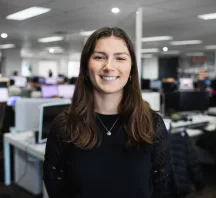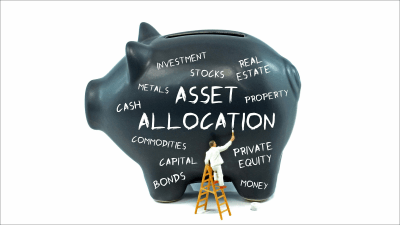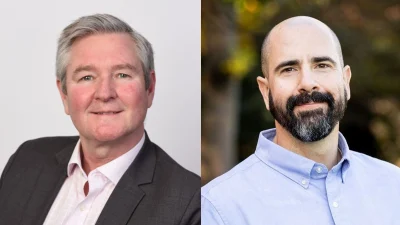BDMs critical to advisers’ understanding of alts markets



Fund managers and financial advisers alike have said they are relying on business development managers (BDMs) more than ever to articulate the benefits and risks of the ever-growing alternative investment market.
In recent years, Australian advisers and their clients are increasingly turning towards private market investments for their strong performance and diversification benefits, among other reasons.
In fact, Hamilton Lane recently discovered that Australian advised clients exhibit the highest enthusiasm for the asset class globally, with 61 per cent of clients described as “very interested”. The US followed at 53 per cent for eager clients, Canada at 42 per cent, and Europe at 33 per cent.
To capture this evident demand, asset managers are being urged to embrace alternatives in their product offerings if they haven’t done so already. Investment firms that are not currently in private markets will find themselves forced to acquire or partner to survive in 2025, according to global consultancy Bain & Company.
“There’s more alternative products in the market and advisers are now more open to considering alternatives when recommending investment products to their clients,” Fabian Ruggieri, founder and director at RIVA Recruitment, told Money Management.
But as these products grow in popularity, BDMs said their role is becoming more vital as product providers look to them to bridge the gap between the firm and the adviser as they broaden their target market.
The most common alternative products targeted at the retail market are private equity funds followed by credit and real estate products, according to EY.
While providing support to advisers has long been part of the BDM’s job, the educational guidance they deliver has become even more important as advisers navigate an ever-growing sea of alternatives and private market funds.
“Advisers are relying on the distribution professionals to provide the education insight when considering a private assets fund. There’s a lot more investment products in the market, so advisers have a lot more choice, but the BDM’s job is to educate the adviser on their fund offering and how it could fit in their clients’ portfolios,” Ruggieri said.
Cutting through the noise
Sharing his perspective as an adviser, Saikal-Skea Independent Financial Advice founder Andrew Saikal-Skea noted the risks that come with making investments in the asset class.
“[Private market] funds generally are fairly opaque, so it’s very hard to figure out what’s really going on, which just leaves me with a generally uneasy feeling. You don’t want to recommend something that ultimately fails – we want to avoid, more than anything, total loss of capital,” he unpacked.
Saikal-Skea said that without the support of BDMs, he would not feel confident attempting to understand what is behind the curtain of these funds.
“From public offer documents and whatnot, it’s really difficult to try and understand the fund. So you almost need the BDMs to help with your questions as you try and work through them.
“Where there are good BDMs, you can then gain a better understanding of what’s actually happening in the fund and the reasoning for it. Whereas with funds that don’t have BDM access, it’s very difficult to work out what’s going on and why, and then be able to help us and our clients make an informed decision about what to do.”
As a BDM herself, Reach Alternative Investments’ Annabel Roberts said advisers are requiring assistance when sifting through the plethora of new options being launched in the private markets space.
“The biggest thing that we hear from advisers is lack of education. I think part of that comes from the market being oversaturated,” she said to Money Management.
“There’s been so many new managers and new funds popping up that it almost causes confusion. When [advisers] talk about education, it’s not about ‘what are private markets?’; it’s more around manager selection and the diversification piece and liquidity profile. It’s less about education as in not knowing what private markets are; it’s education on the broad array of options out there. It’s so oversaturated that it becomes overwhelming.”
Similarly, Angus Mann, financial adviser at Viola Private Wealth, noted that the democratisation of private market investments in the retail space has made it more challenging to choose the right option for clients.
“The challenge is that there’s now a large influx of products in some of these asset classes, and it’s really on ensuring that you sort the quality from a lot of the chaff, particularly with a lot of the newcomers,” he said. “While it is great that they are becoming more democratised and more widely available, that increases the challenge of selecting the right opportunities for clients.”
As a result, the educational support and insight that a BDM provides has become even more vital, both advisers said.
Mann added: “I’m lucky that I’ve been dealing with some BDMs, in some instances, for over a decade. So we’ve really gotten to know each other’s needs very well. The education part is really key from a lot of the product providers.”
Meanwhile, Saikal-Skea remarked: “I’ve always used BDMs as an educational tool. With alternative investments, you almost can’t use the product without [BDMs].
A recent report from EY stated many alternative asset managers would need to “significantly” step up their education and engagement efforts with advisers if they wish their funds to be included in client portfolios. This could include by offering client information hubs or partnering with external firms to strengthen investor awareness.
Mark Carlile, JPMAM’s head of wholesale distribution for Australia and New Zealand, said: “We invest heavily in producing thought leadership content which equips our clients and our teams with the knowledge needed to understand and communicate the nuances of these products effectively.
“This ongoing education ensures that they can meet the fiduciary duty of acting in the best interest of clients.”
Saikal-Skea also explained: “What I’d say for the vast majority of [fund] managers here is that without the BDMs, it would be just impossible for them to get their funds off the ground with advisers. I can’t imagine how they would ever get an adviser comfortable enough to be able to invest in a fund without a BDM.”
Upskilling through further education
As the alternative funds pool continues to expand, BDMs themselves are looking to upskill and enhance their knowledge of these products through certain educational courses.
“BDMs have had to upskill in learning about the different alternative products in the market as they are representing those alternatives, or coming up against those alternatives as competition,” Ruggieri said.
The recruitment professional highlighted the Chartered Alternative Investment Analyst (CAIA) course as an example that many BDMs are completing to further their understanding of the alternatives landscape.
While BDMs are not required to undertake additional training, Roberts encouraged them to do so regardless for their own knowledge.
“I’m looking at doing my CAIA, which is an alternative specialist course. In the BDM world, to differentiate yourself and to make sure that you’re well-informed and able to educate the people that you’re speaking to as well, [having education] is important,” she said.
Over at JPMAM, the firm’s distribution team is focusing heavily on further training to stay ahead in the alternatives market.
“As the market for alternative products expands, our team is continually upskilling to stay ahead. We conduct regular training calls with each investment team, in addition to internal training sessions on how to better articulate a strategy, given they are more complex than ETFs or traditional equity or fixed income investments,” said Carlile.
He said he looks for distribution specialists who have an ambition to learn, are good communicators, able to engage with clients, and can break complex matters into easy-to-understand blocks.
With the use of alternatives in client portfolios projected to rise by over 20 per cent in the next decade, according to JPMAM, Roberts said she expects the alternatives space to maintain its rapid growth.
She said: “It’s a rapidly growing side of the market. There’s some really exciting things happening in this space. It’s a challenging environment, but it’s also really interesting. There’s a big shift towards alternative investments that we’re still seeing happening. I don’t think it’s slowing down anytime soon.”
Recommended for you
Former financial adviser Bradley Grimm has lost his appeal to have his sentence overturned in the Supreme Court of Victoria after judges ruled the conditions were “lenient” for his actions.
Following ASIC’s report into AFSLs’ adoption of AI last year, two DASH executives have urged financial advice practices to consider AI within their risk governance frameworks or risk regulatory scrutiny.
With SMAs and MDAs being “the most powerful strategy” advisers can employ in their business, this CEO examines why the latter offers a sweet spot between efficiency and customisation.
Compensation claims regarding United Global Capital may be a “much bigger issue” than Dixon Advisory this year, the FAAA has said, but Dixon will be back on the agenda for FY26–27 and could push the levy past $100 million.















